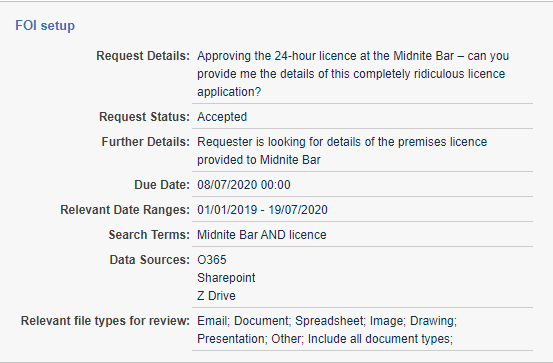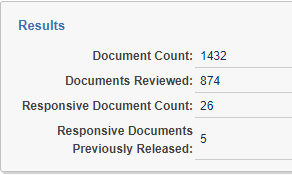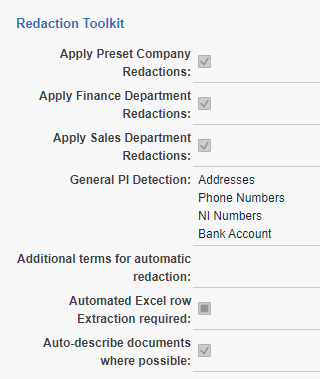The Freedom of Information Act (“FOIA”) gives individuals the right to see recorded information held by public authorities. Once a request under the FOIA is made, there are stringent time limits in place: authorities are required to provide the requested information within 20 working-days. Our Director of eDiscovery Klaudia Aliaj and Director of Technical Services Stu Craft cover how we can use our technology to help meet these strict deadlines and build a robust process.
Key Considerations
- Prior to responding, public authorities should consider whether any exemptions apply. Grounds include the projected cost of the response, which cannot exceed a statutory limit.
- When compiling a response to a request for information, respondents must consider all data sources and the types of data that contain potentially responsive information. The data provided can be in the form of computer files, letters, emails, photographs, sound or video recording and printed documents. It is important to consider not only where data resides within your environment but also how you ensure it is searchable.
- The information provided to the requester needs to be in a format that the requester can understand. Respondents should also remember that the information provided will be visible to the public, not only the requester.
- The public nature of the response adds further need for respondents to have a robust system in place to avoid inadvertent disclosure of personal or sensitive information.
Process
Preparing a response that complies with the guidelines within 20 working days can be challenging.
Anexsys makes use of and builds on top of Relativity, the market-leading eDiscovery platform which provides an immediately accessible and proven solution for searching and reviewing documents with ease.
So how can technology be used to streamline the process of FOIA requests?
Step 1 – Be Request-Ready - Consider where recorded information and data is currently stored and the ease with which it can be retrieved.
Our team can assess your data sources and help to establish a centralised, up to date repository for data potentially subject to FOIA requests. A log page can be created within Relativity, which can easily track and update data sources. This means when a request comes in you already know where and how you will get to that data.

Step 2 – FOIA Considerations - Upon receipt of a valid request, seek any necessary clarifications, consider the types of data required, what searches need to be carried out and the format of the response.
By building these prompts into the workflow it can ensure the responding team is thinking about the right questions at the right time. The other advantage of building up a collection of requests is to allow you to easily check if the request has already been fulfilled or partly fulfilled before, saving time and effort.

Step 3 – Apply Technology - eDiscovery tools are designed to support search and review over large amounts of data from disparate sources, making them perfect to assist with FOIA reviews.
These platforms can help create responses via:
Unifying Data – They can provide a single repository for all data sources, meaning all potentially relevant information is stored in one place.

Data Extraction– Processing tools extract key metadata from documents such as date, custodian, file type as well as the underlying textual content which enables targeted searching and a focused review.
Data Reduction - There are various analytical techniques to reduce data for review from deduplication, which helps to remove duplicate copies of documents to email threading, which helps present emails in their threaded nature reducing the number of documents to review.
Finding your documents - eDiscovery platforms have comprehensive search engines supporting concepts such as proximity and stemming searches to help find the key data. Analytics can also be used to help cluster similar documents and to find documents based on concepts. This means you can quickly locate documents which are likely to be key to fulfilling the request and get them in front of the responders first.
Tracking Requests and Disclosed Information – The platform can be used to track which documents have already been released to the public in response to previous FOIA requests. This can assist with repeated requests for the same information and allows public authorities to avoid duplication of work, for instance if a document has already had sensitive content redacted, this will not need to be repeated.

Automatic redaction – Personal and sensitive data within documents provided to a respondent will often need to be redacted. Done manually this can be a time-consuming process. Anexsys’ automated redaction application Mask-It! can significantly speed up the redaction process, leading to significant time savings.

By following a robust process and allowing technology to support the necessary workflows, the primary focus for the responding team can remain on answering the response effectively and efficiently. This allows for improved responses and fewer follow up requests.
Get in touch with us if you require any support on FOIA requests.

0 Comment/s: